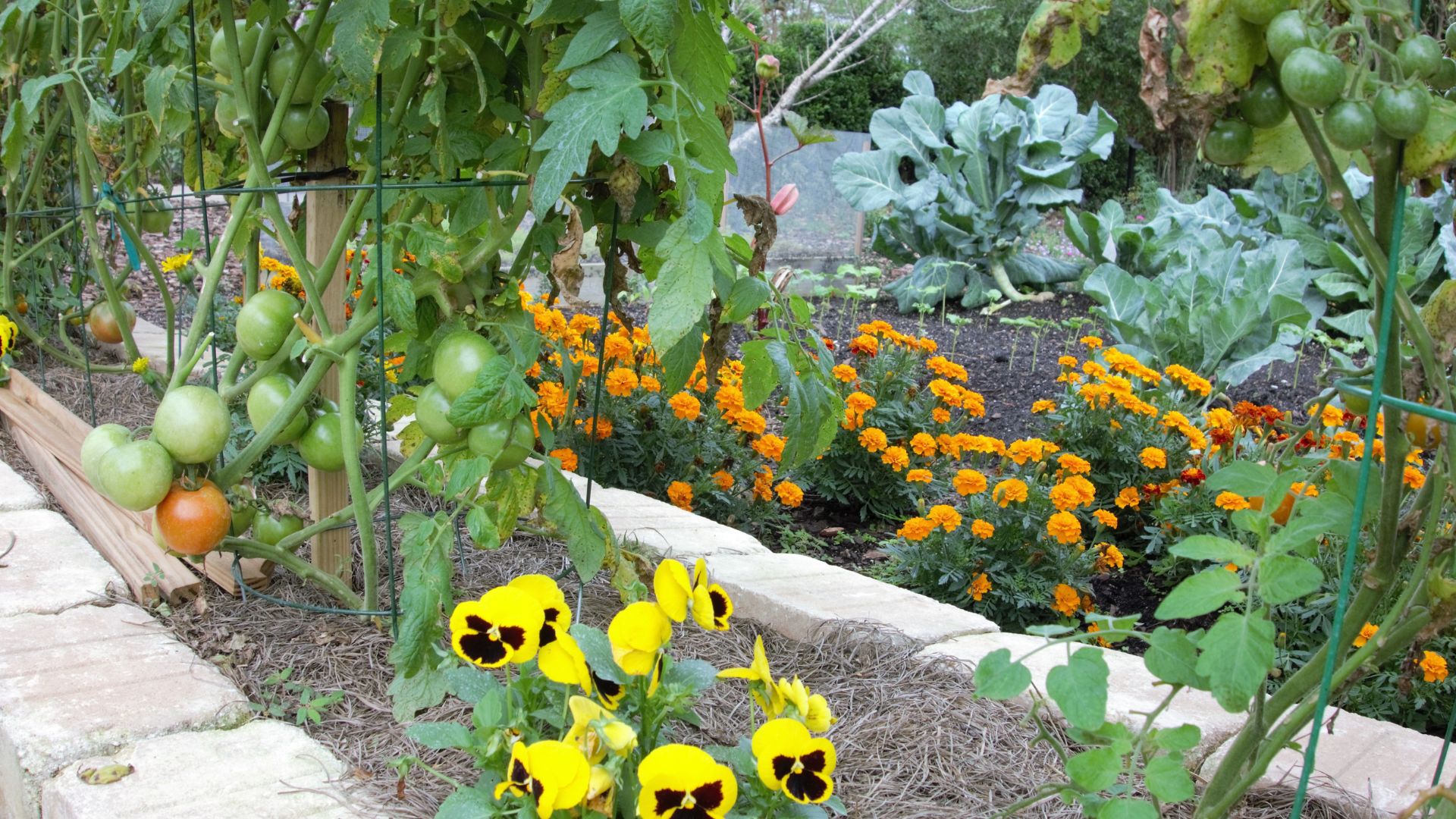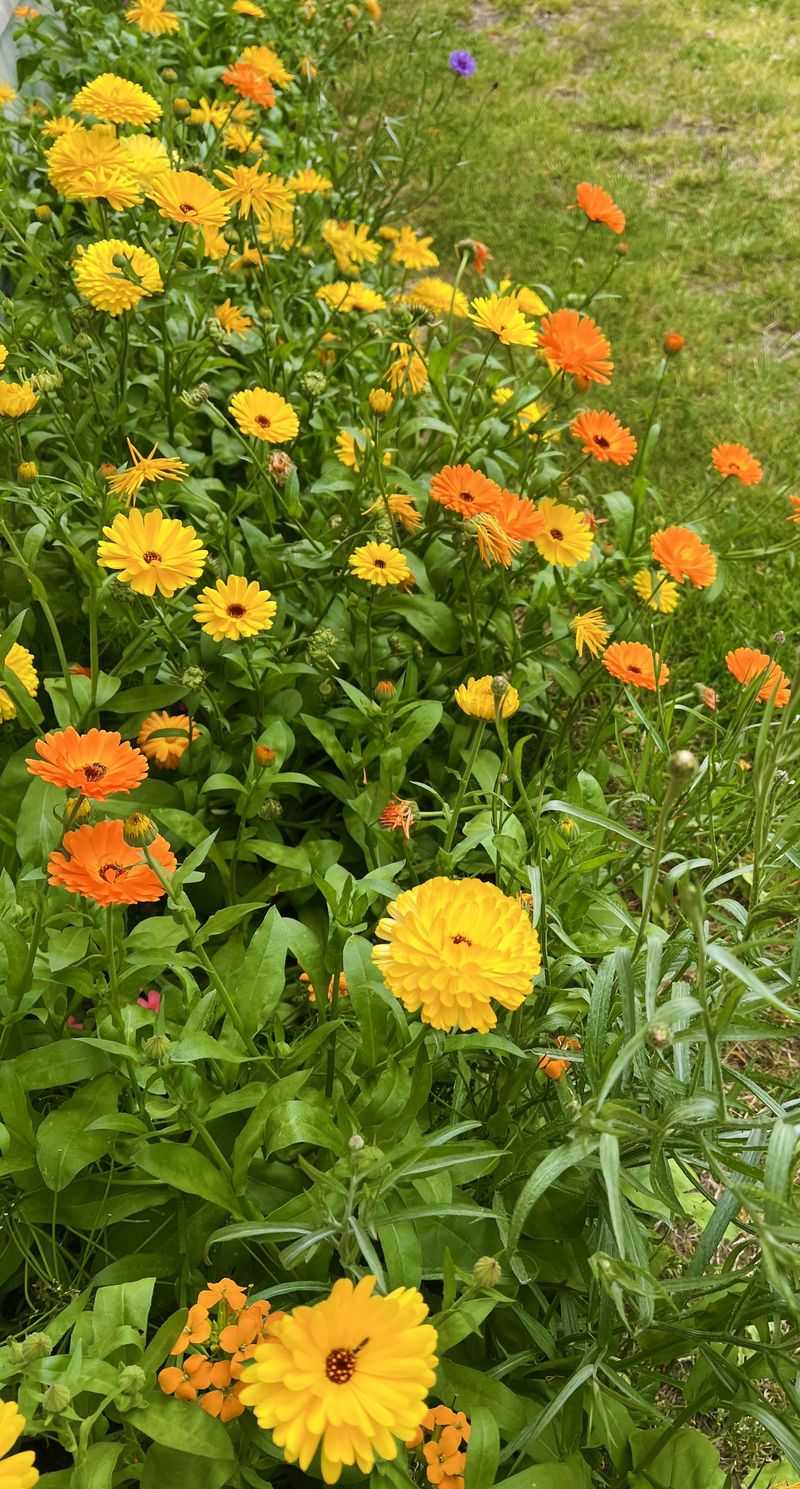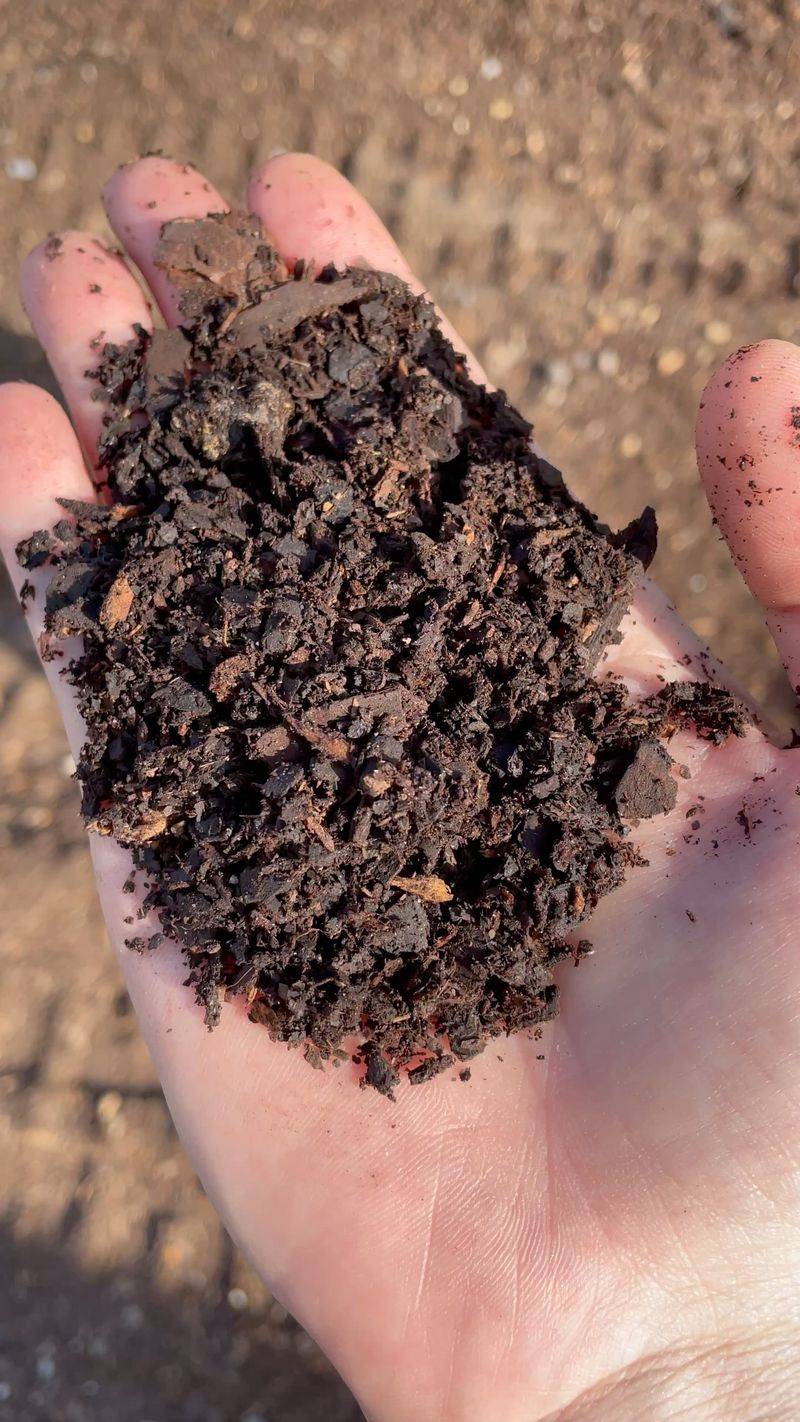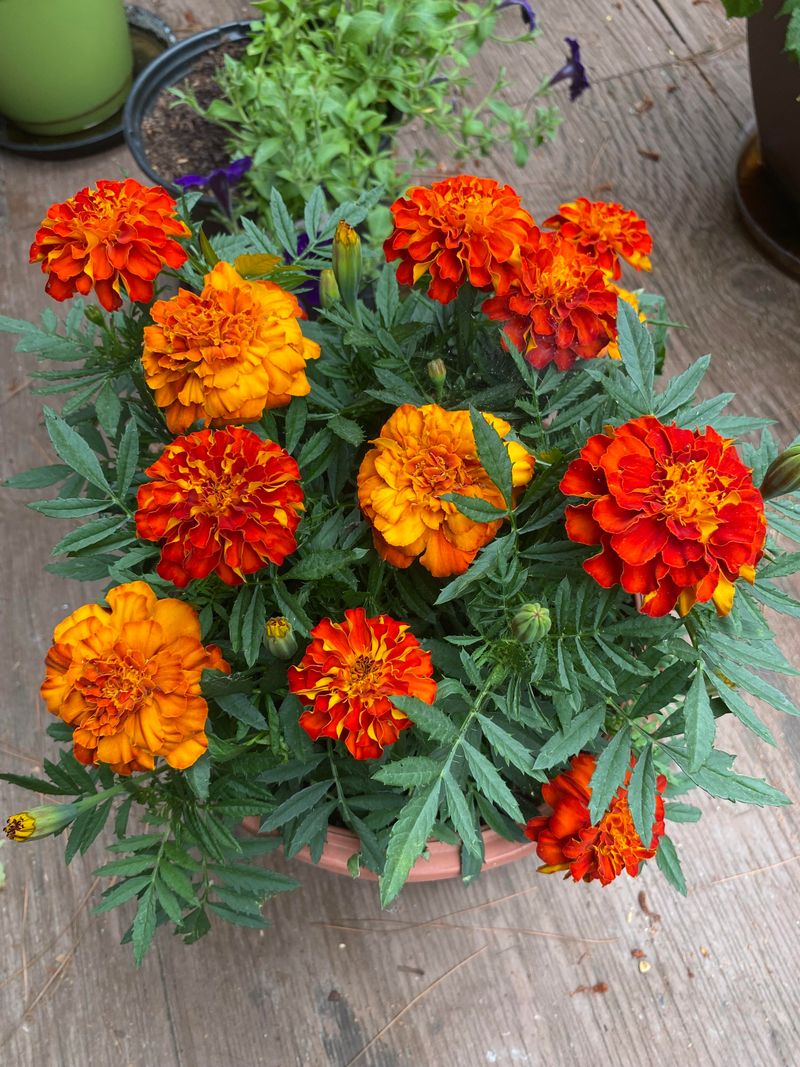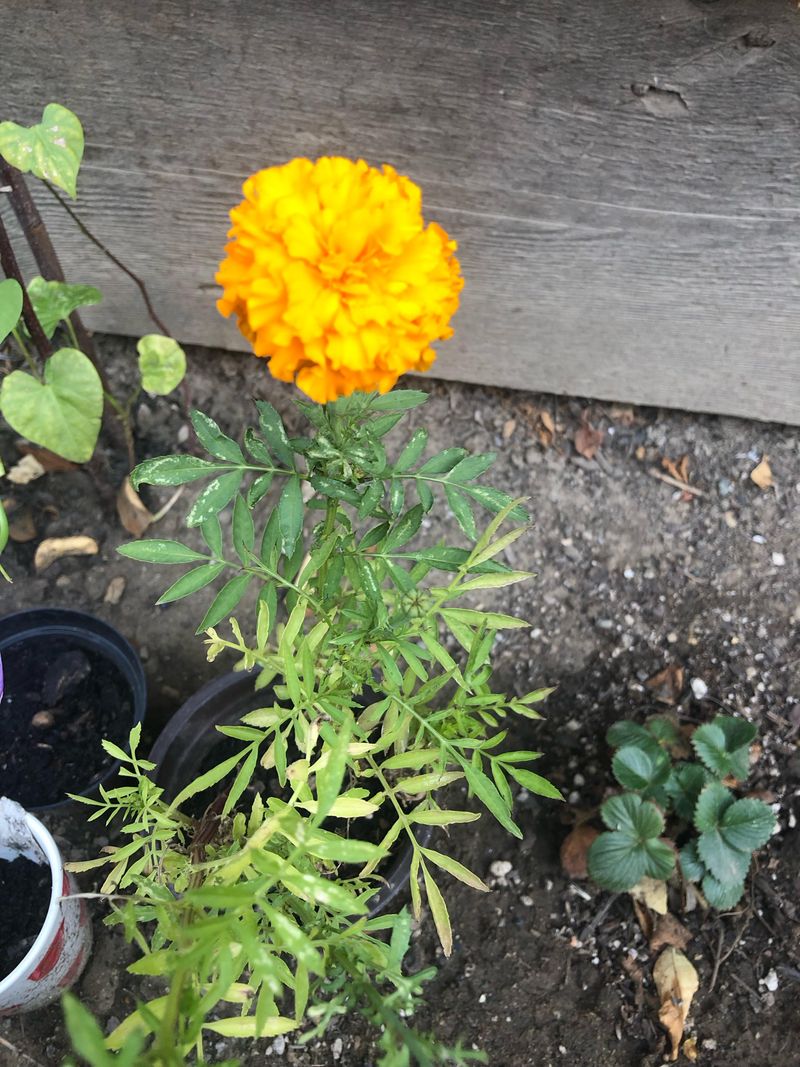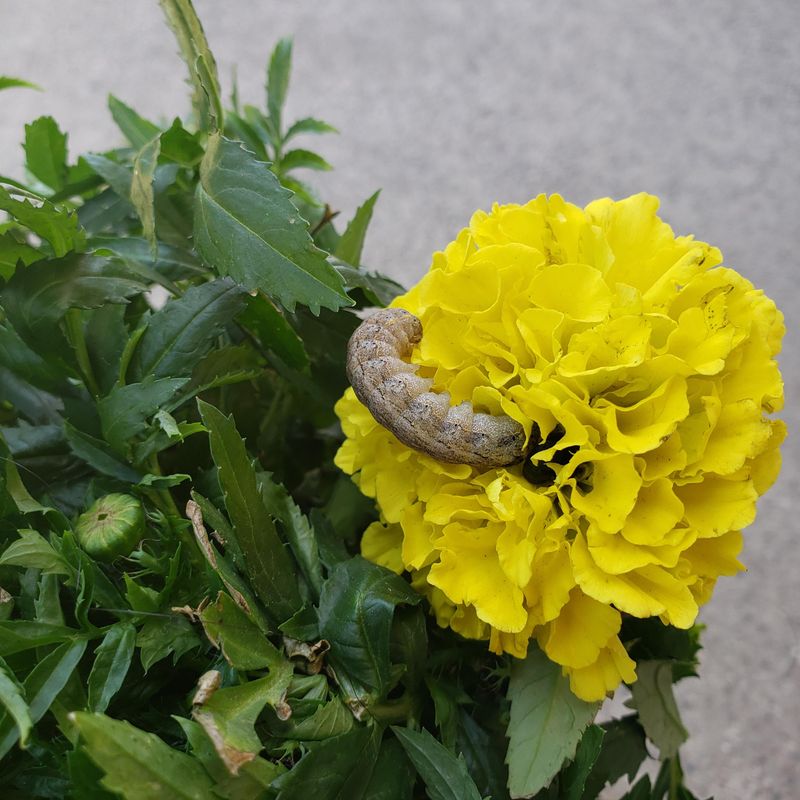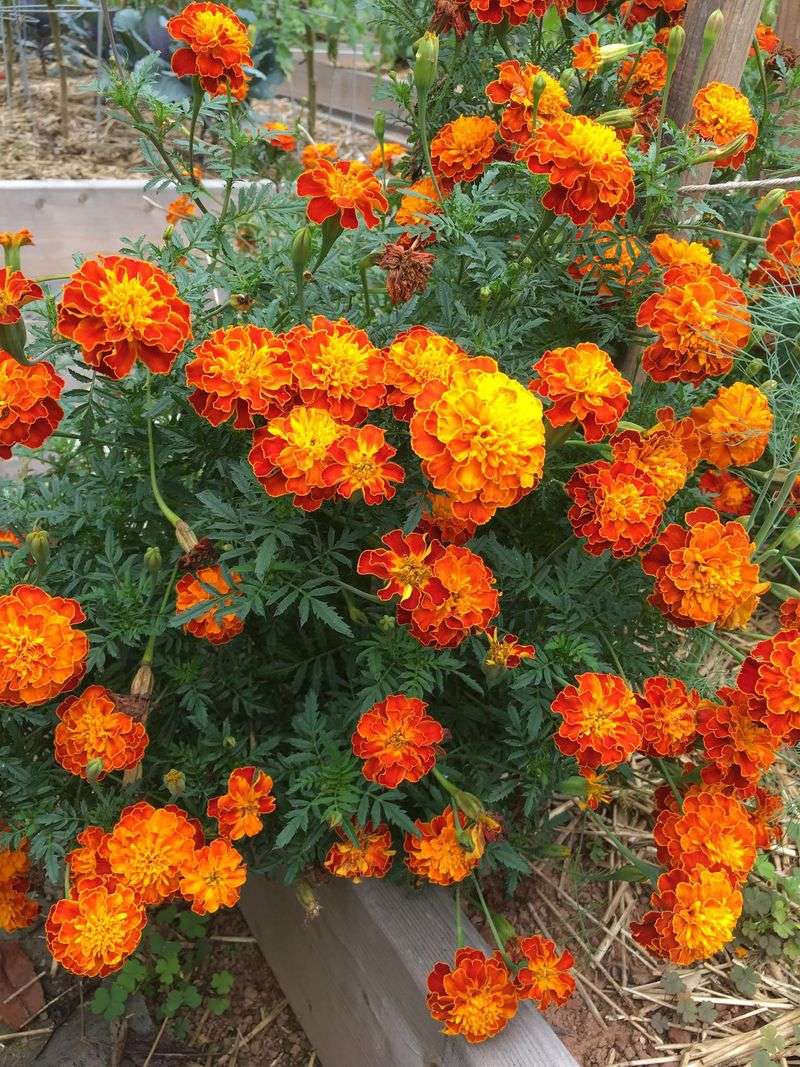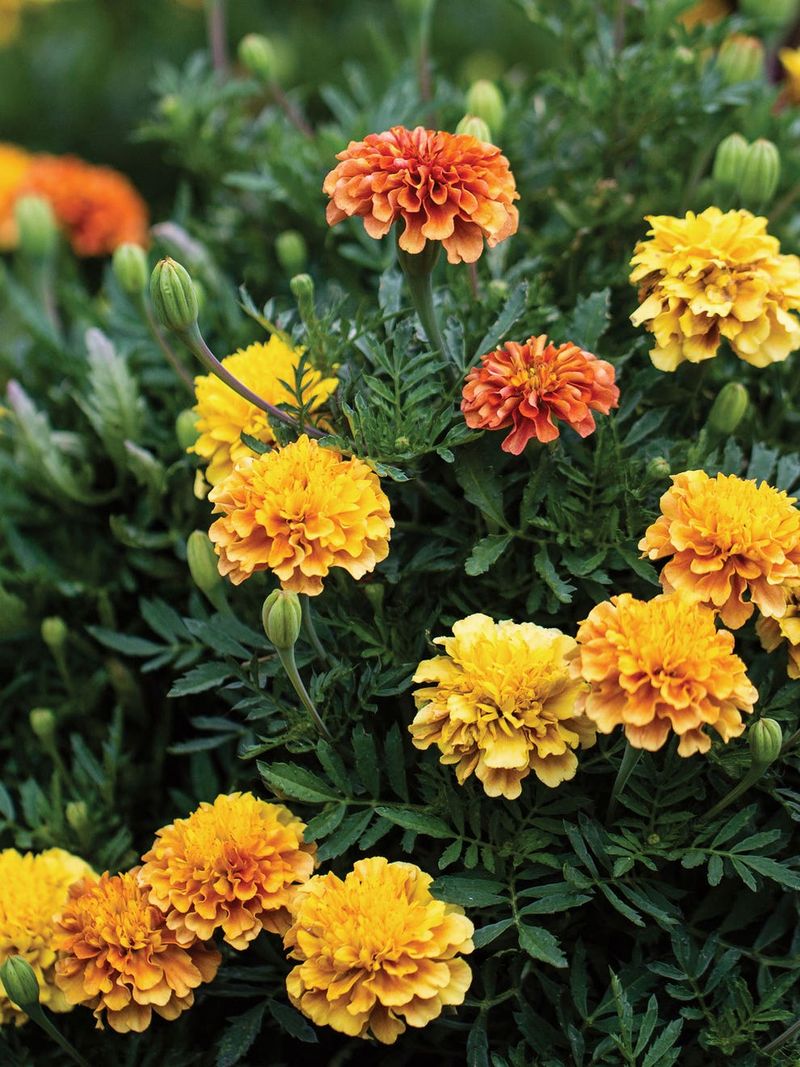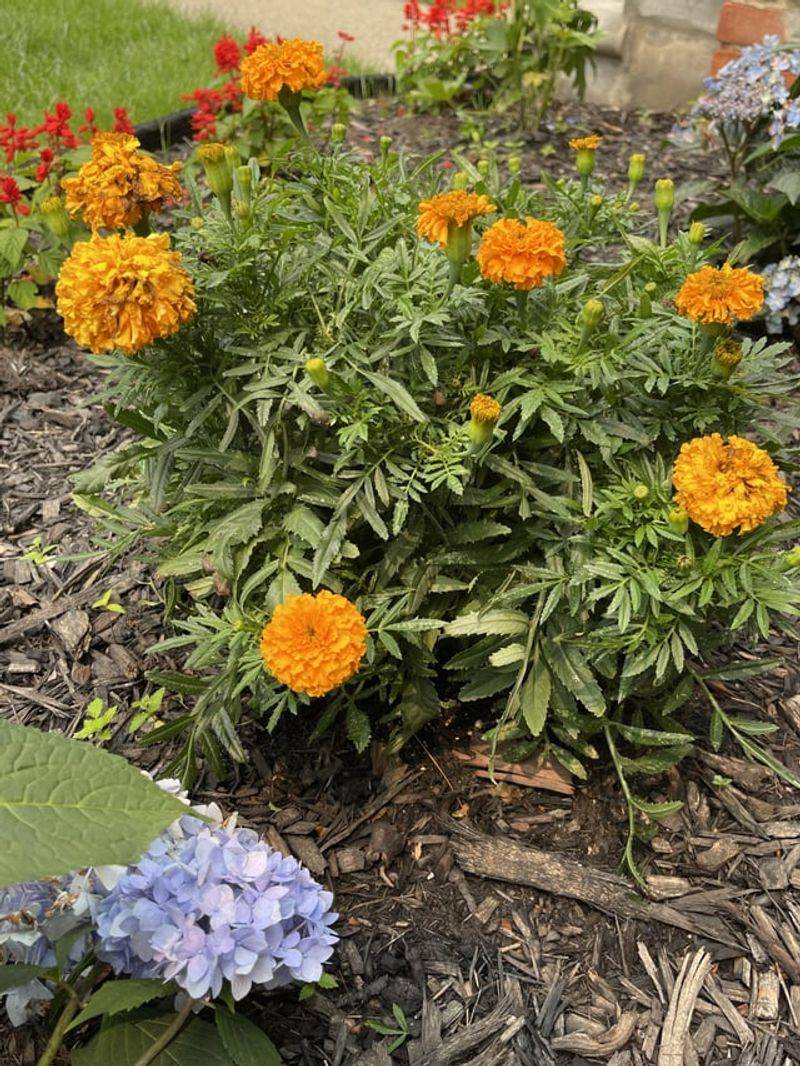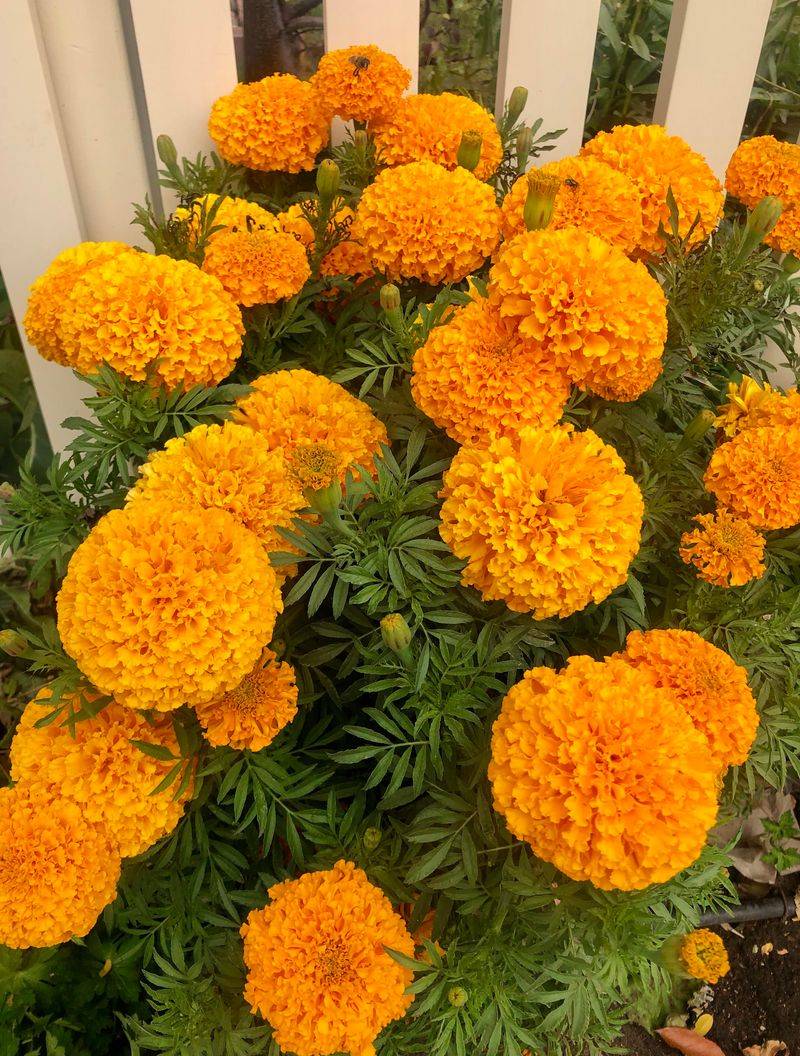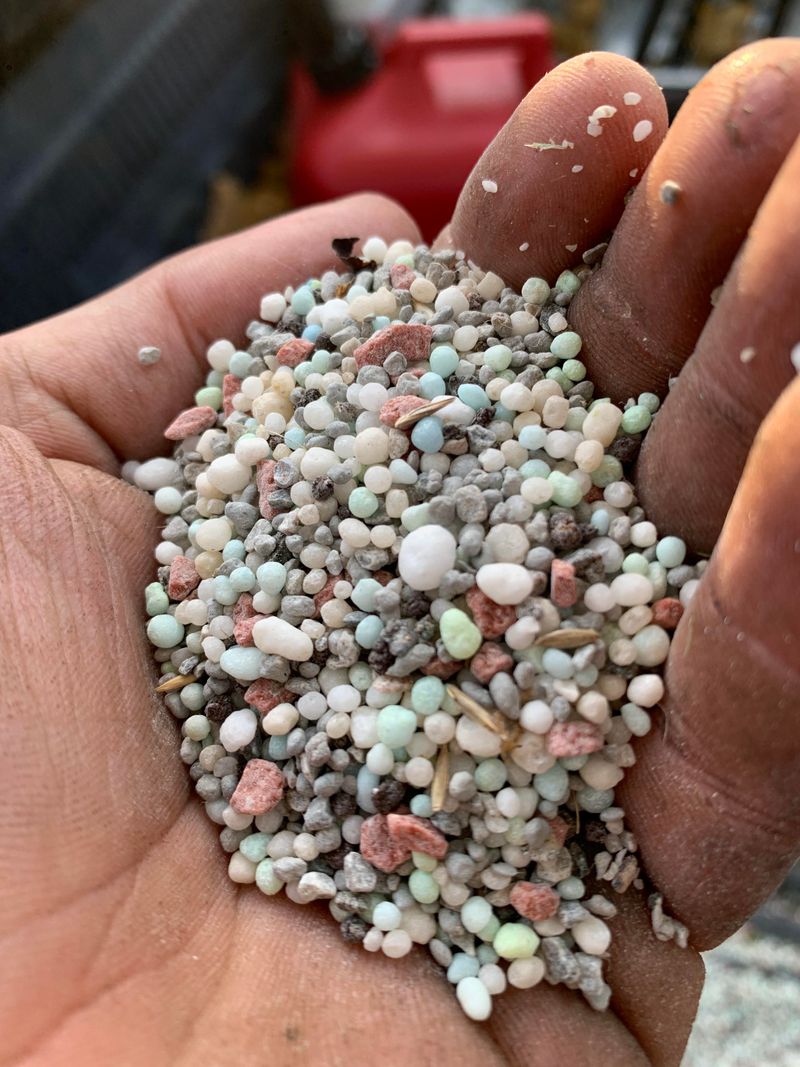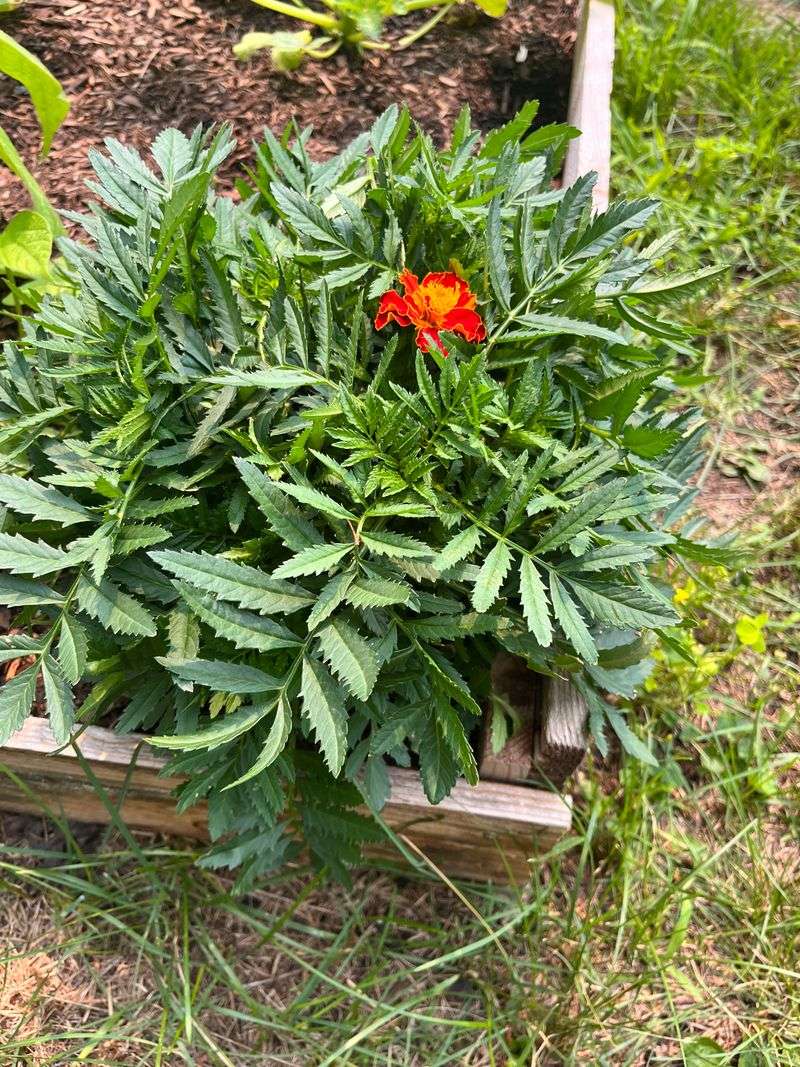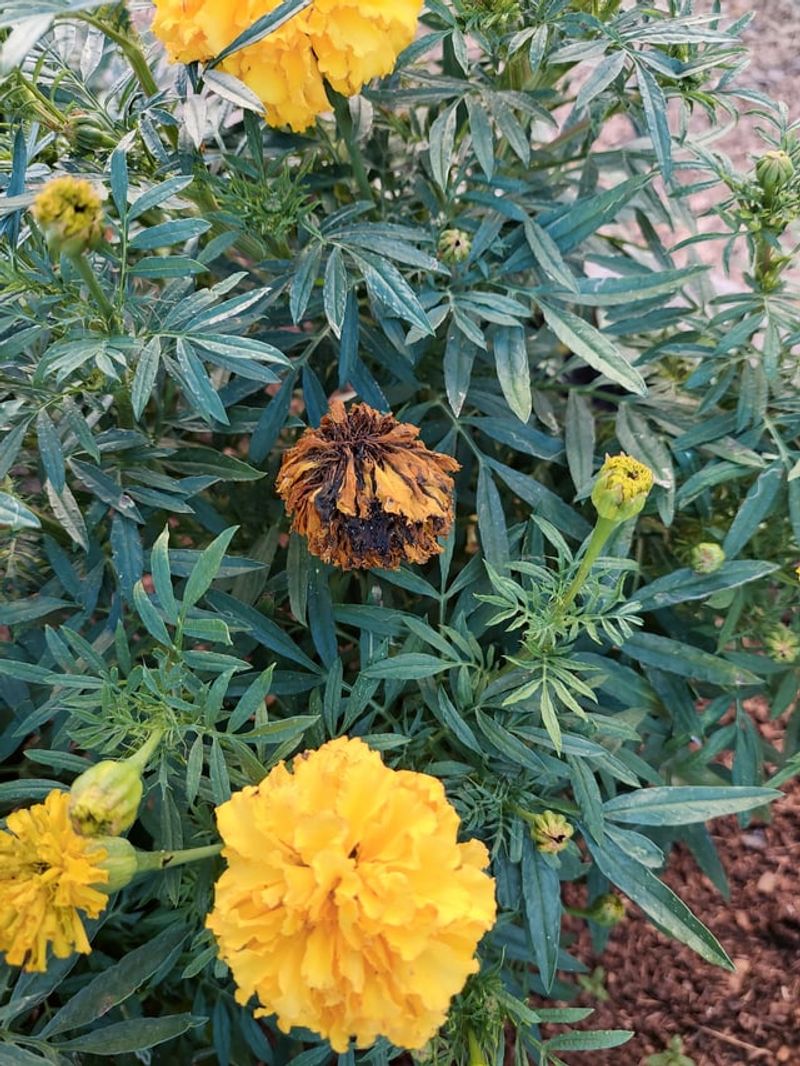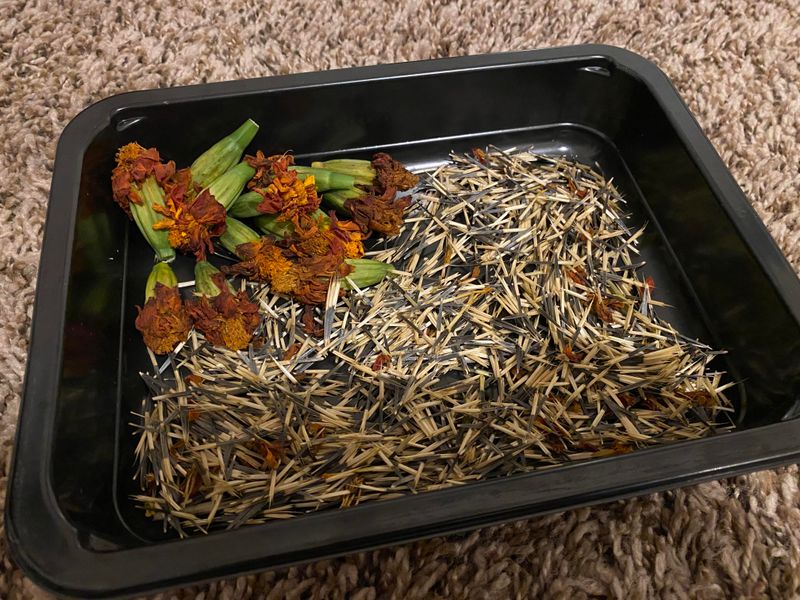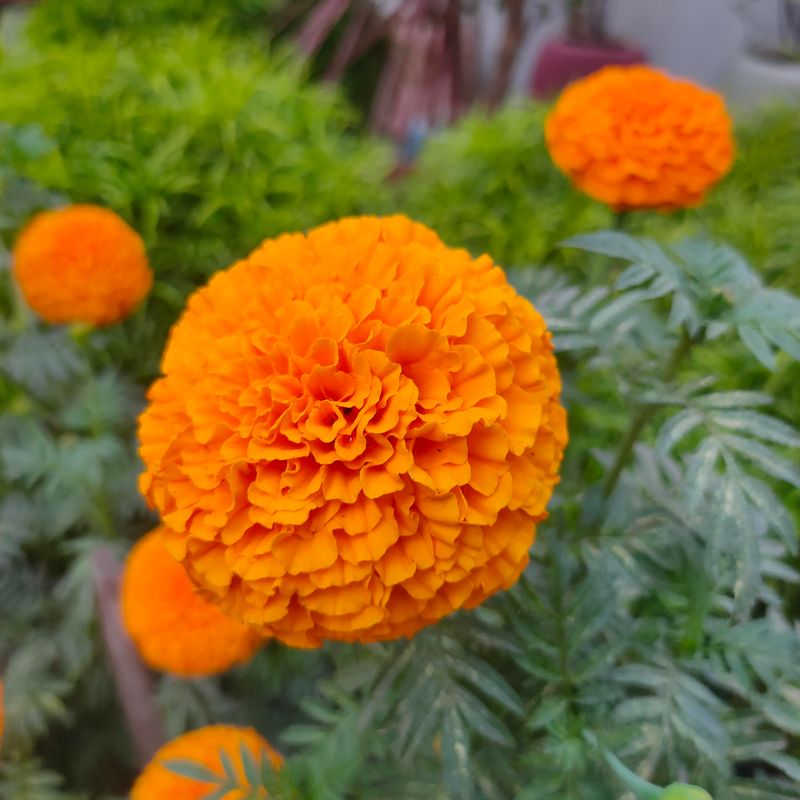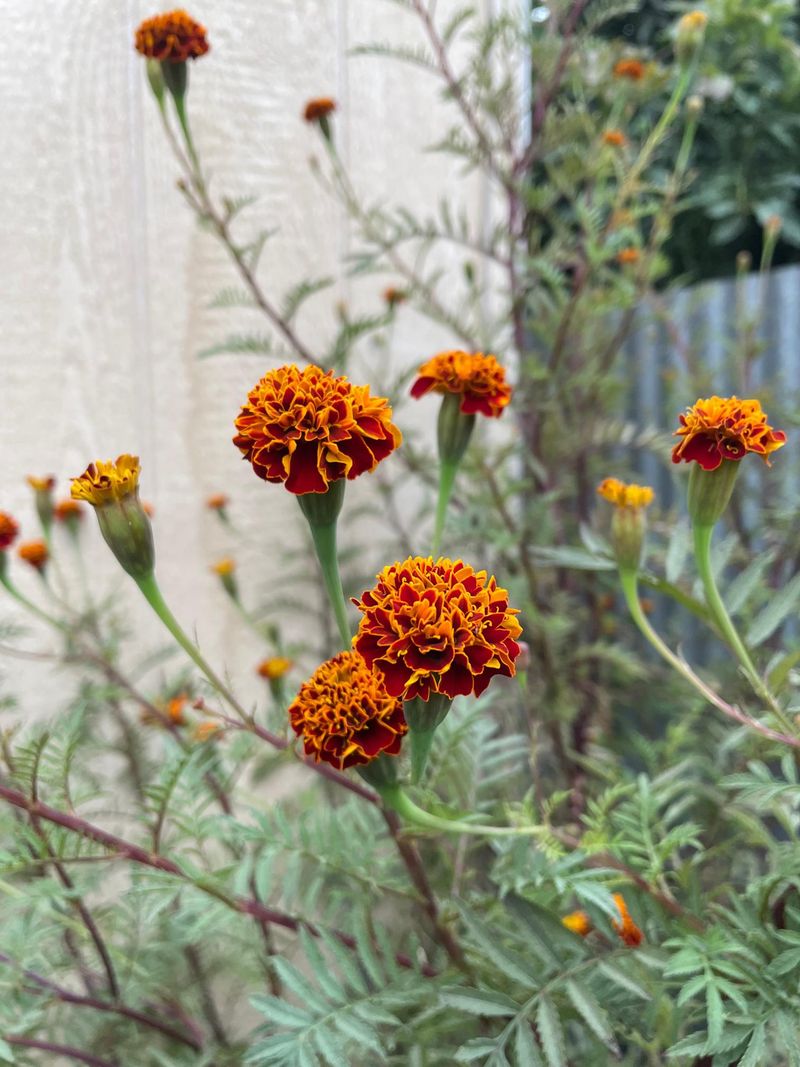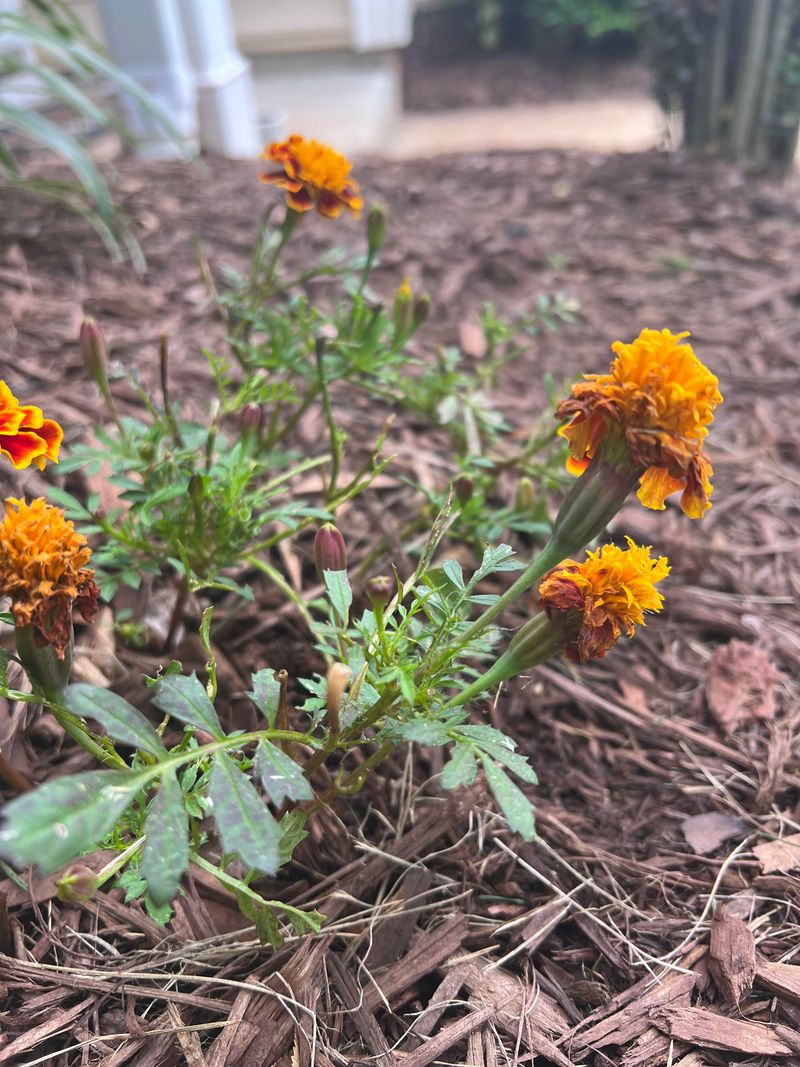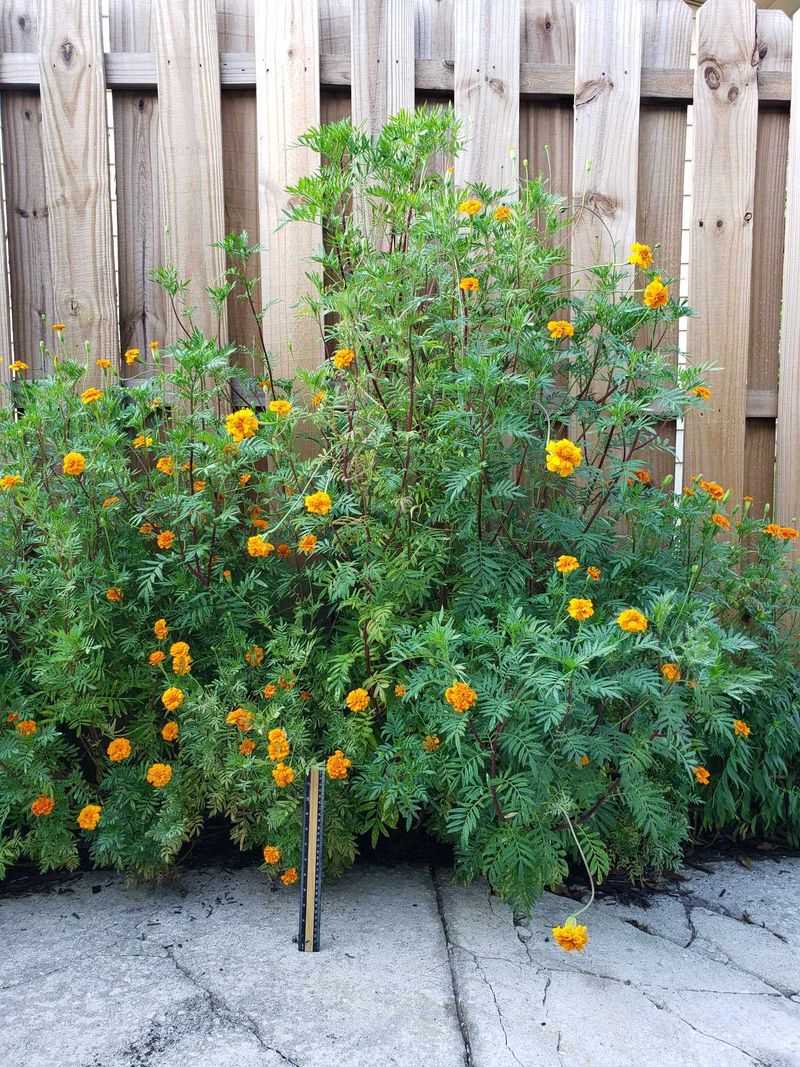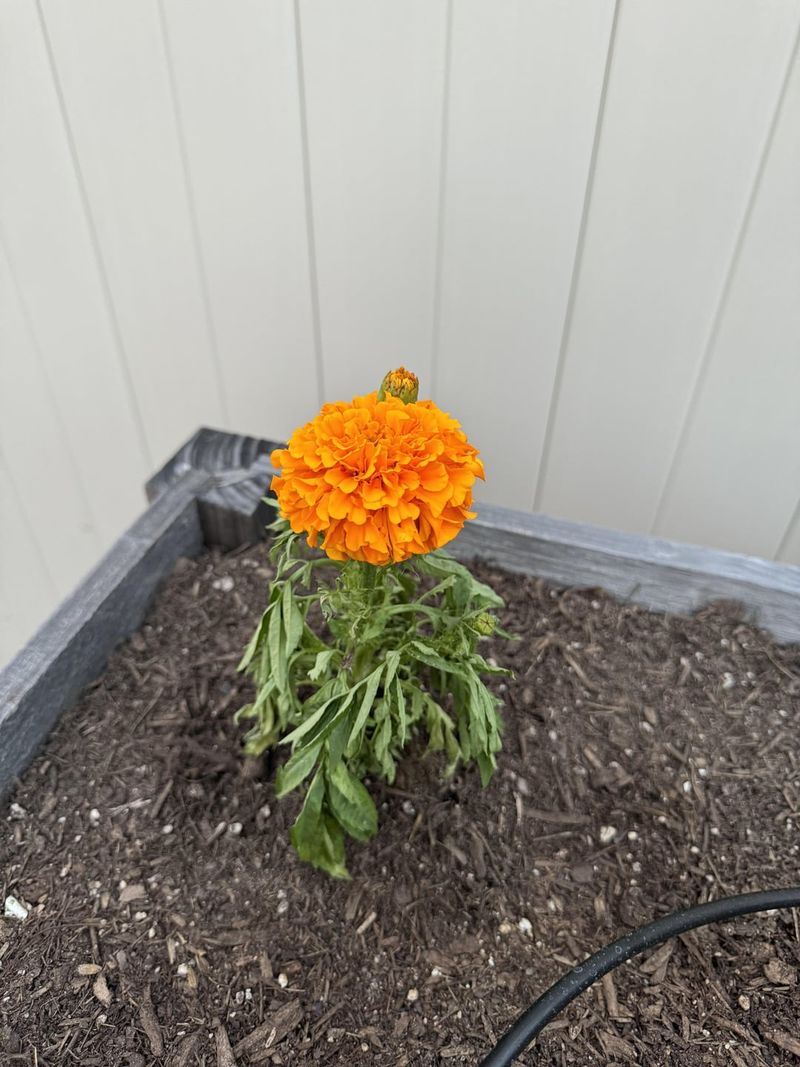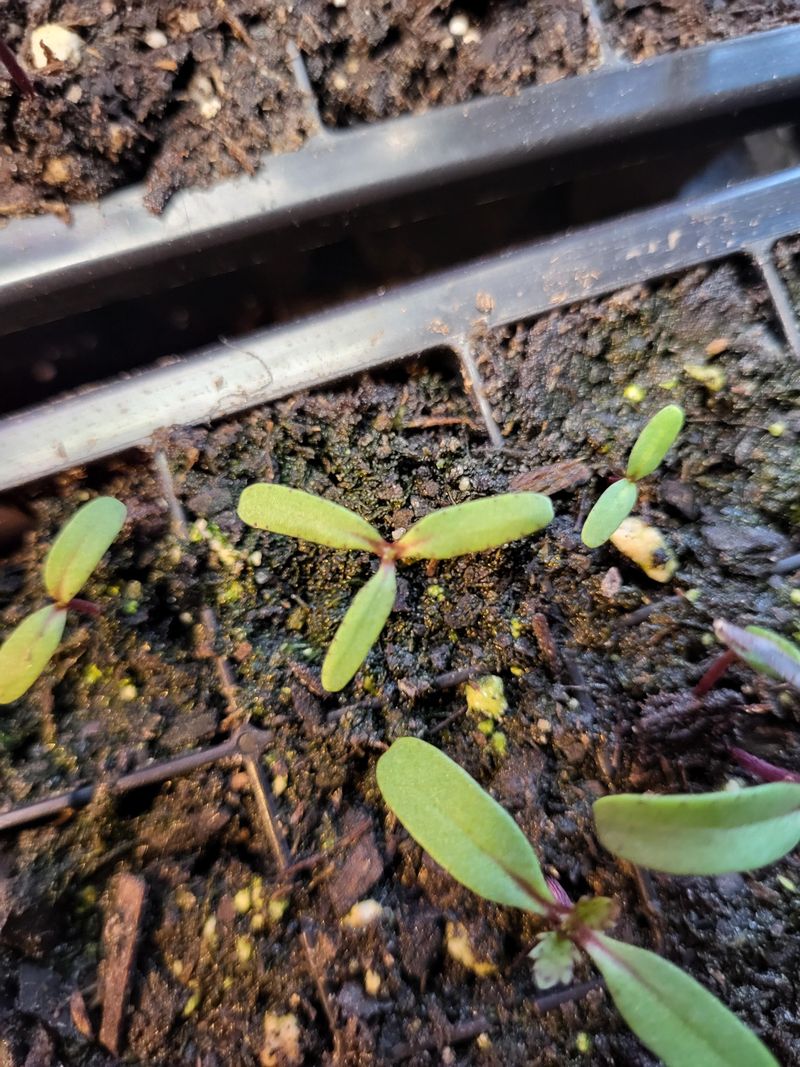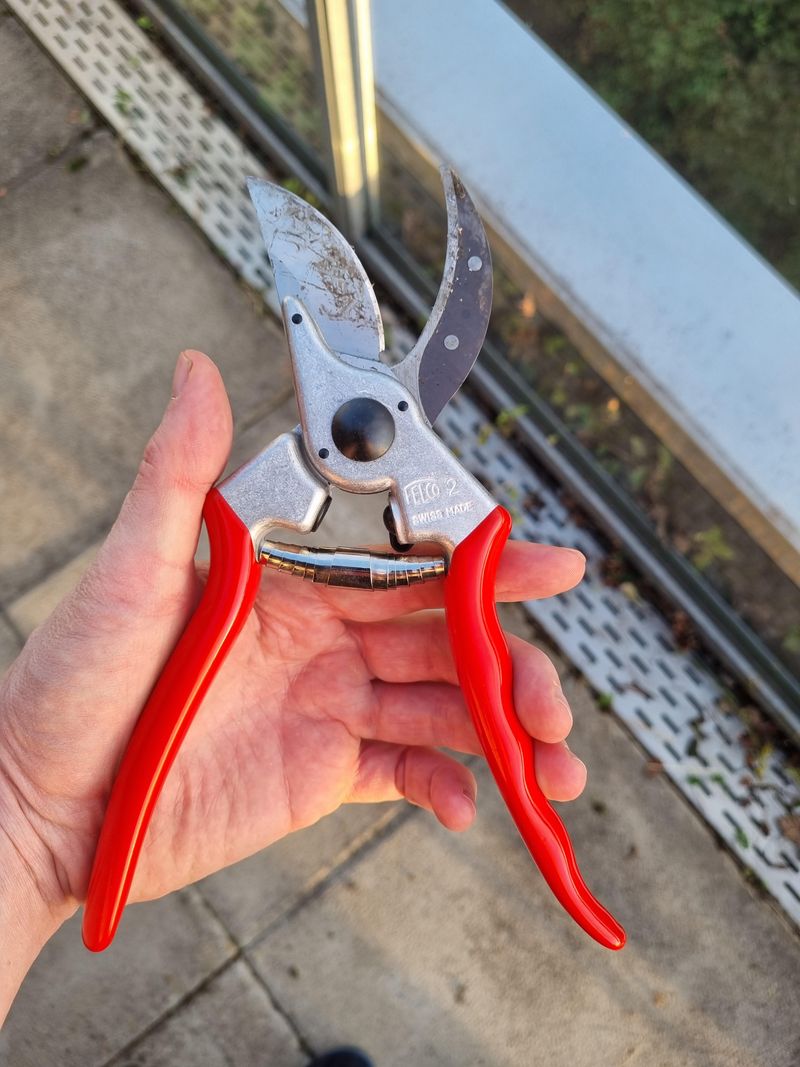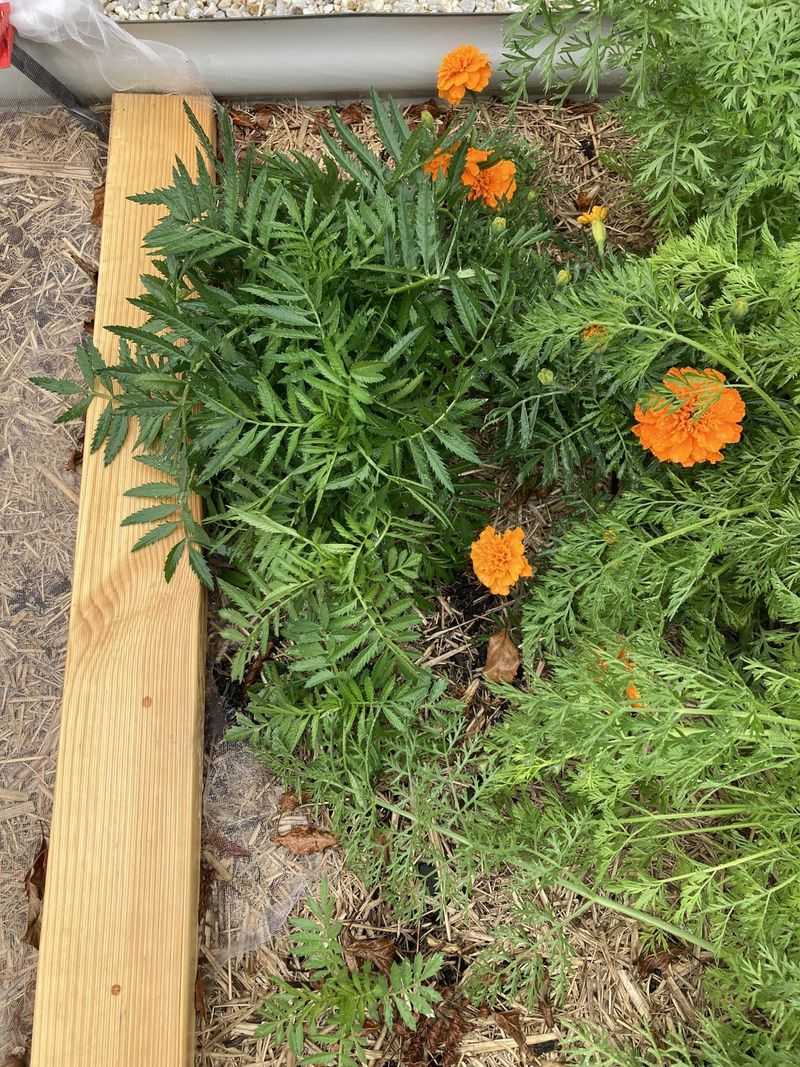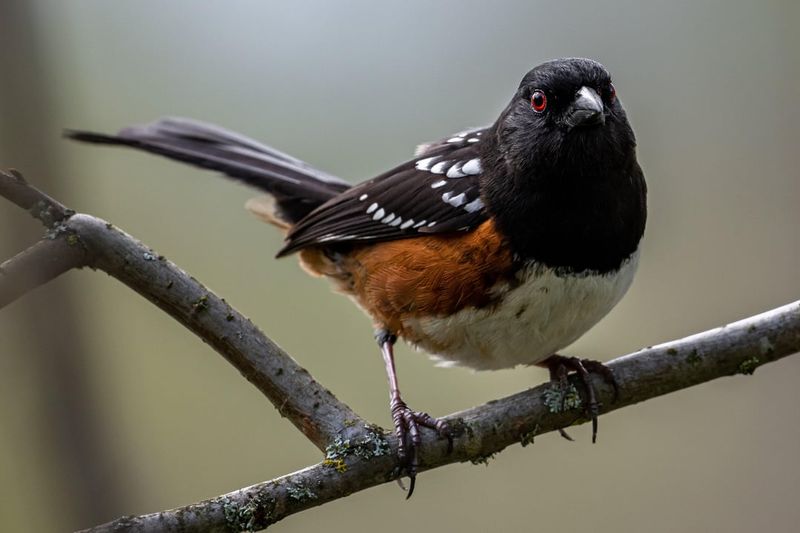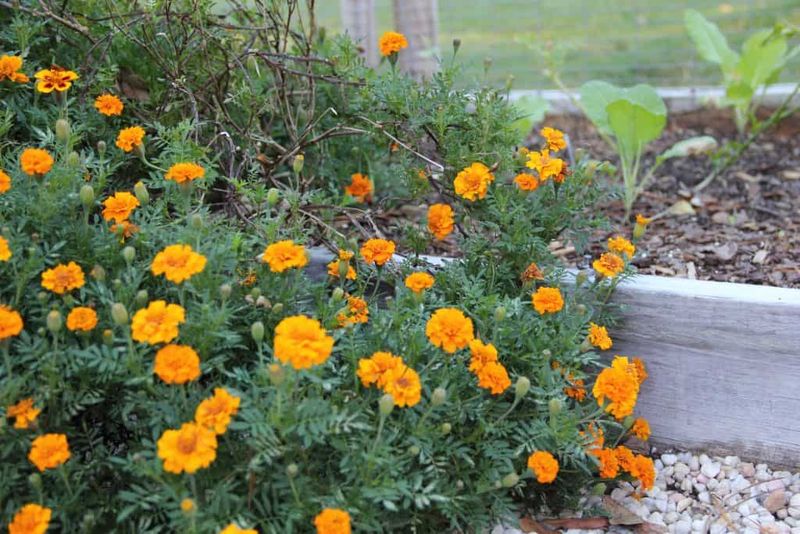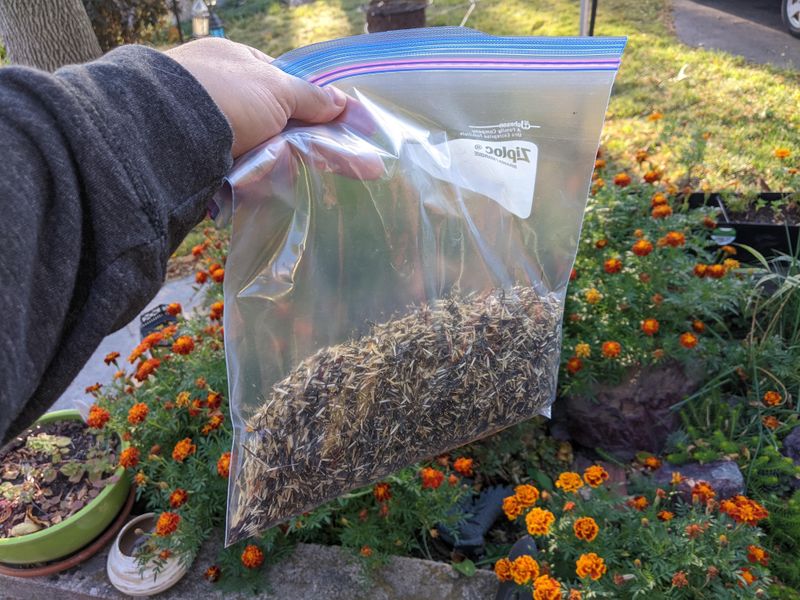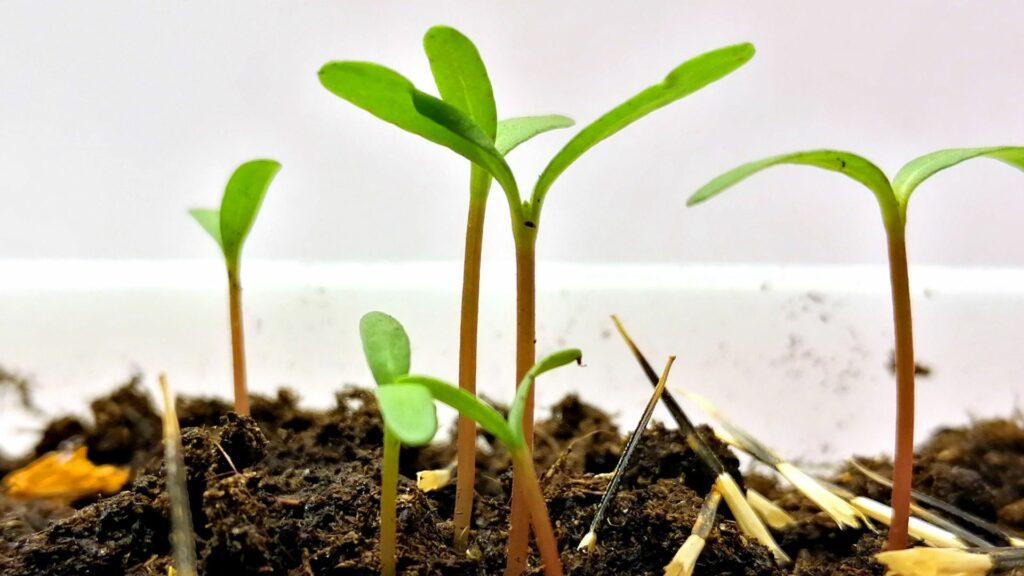Marigolds are often seen as the go-to companion plant—and for good reason. They’re easy to grow, look great, and have natural pest-repelling powers. But that doesn’t mean you can just stick them anywhere and call it a day. Using marigolds the wrong way can actually do more harm than good.
From choosing the wrong type to planting them too close (or too far), these common mistakes can mess with your garden’s balance. If you want your marigolds to actually help your veggies and herbs, it’s all about placement, timing, and knowing what not to do.
1. Overcrowding Your Plants
When planting, space is everything. Marigolds need room to breathe and flourish. If they’re cramped, they won’t work their magic. Marigolds are known for deterring pests, but if squeezed in, they become stressed. Stressed plants attract more pests rather than repelling them.
Proper spacing not only helps marigolds thrive but also ensures they effectively protect their neighboring plants. As a rule of thumb, consider the mature size of the marigold variety you’re planting. This small adjustment can make a big impact on your garden’s health.
2. Ignoring Soil Quality
Soil is the foundation of any garden. Overlooking it spells trouble. Marigolds do best in well-draining soil with a balanced pH. If the soil is poor, marigolds can’t perform their pest-repelling duties effectively.
Before planting, take the time to test your soil and amend it as needed. This ensures that marigolds can thrive and do their job. Ignoring soil quality is like building a house on sand; it just won’t stand. A little attention here goes a long way in ensuring success.
3. Planting In Full Shade
Light is essential for growth. Marigolds crave sunshine. Without it, they become weak and ineffective. Planting them in full shade is asking for trouble. They won’t provide the benefits you’re looking for and may even struggle to survive.
Ensure your marigolds get plenty of sunlight, ideally 6-8 hours a day. This simple step will invigorate your plants, allowing them to ward off pests successfully. Without adequate light, marigolds are like a musician without an instrument.
4. Overwatering
Watering is a double-edged sword. Too much of it, and plants drown. Marigolds hate soggy conditions. Overwatering leads to root rot, rendering them incapable of doing their job. It’s crucial to let the soil dry out between waterings.
Check the moisture level by sticking a finger into the soil. If it feels dry, it’s time to water. This practice ensures marigolds remain healthy and effective companions. Remember, marigolds are like camels; they prefer less water.
5. Neglecting Pest Control
Marigolds are not a cure-all. While they deter many pests, they’re not invincible. Ignoring pest control can lead to issues. Some insects might still invade your garden despite having marigolds around. Regularly check your plants for signs of pest damage and take appropriate action.
Marigolds are an ally, not the entire army. Combining them with other pest control methods ensures a robust defense. Leaving everything to marigolds is like expecting a single bouncer to handle a rowdy crowd.
6. Choosing The Wrong Variety
Variety matters. Not all marigolds offer the same benefits. Some deter nematodes, while others excel at repelling flying insects. Picking the wrong variety can lead to disappointment. Research and choose the marigold variety that suits your garden’s needs.
This ensures that they can perform their protective duties optimally. A bit of homework helps avoid frustration and wasted effort. It’s like choosing the right tool for the job; get it wrong, and you end up hammering nails with a wrench.
7. Ignoring Companion Plant Compatibility
Compatibility is key in any relationship. The same goes for plants. Marigolds don’t get along with every plant. Placing them near incompatible companions, like beans, can hinder growth. It’s essential to research plant pairings before deciding where to plant your marigolds.
This ensures a harmonious garden where all plants can thrive. Ignoring compatibility is like setting up two friends who don’t get along; it just leads to awkward situations.
8. Failing To Rotate Crops
Stagnation spells trouble in the garden. Planting marigolds in the same spot every year invites disease and weakens soil health. Rotation is your friend. It prevents pests and diseases from establishing a foothold.
Move marigolds around to different parts of your garden each year. This keeps the soil healthy and your marigolds effective. Failing to rotate is like eating the same meal every day; eventually, it loses its appeal.
9. Not Using Enough Marigolds
Strength lies in numbers. A solitary marigold plant can’t protect an entire garden. To reap the benefits, you need plenty of them. Sparse planting leads to ineffective pest control. Incorporate marigolds throughout your garden to maximize their protective qualities.
The more, the merrier, as they say. Underestimating their needed numbers is like expecting a single soldier to guard a fortress; it just won’t work.
10. Misjudging Bloom Time
Timing is everything. If marigolds bloom too early or too late, they won’t sync with the plants they aim to protect. This misalignment reduces their effectiveness. Pay attention to the planting and blooming times of your marigold varieties.
This ensures they flower when needed, offering optimal protection. Misjudging bloom time is like showing up for a party a day late. You miss all the fun!
11. Skipping Fertilization
Nutrition isn’t just for humans. Plants need it too. Marigolds thrive when given the right nutrients. Skipping fertilization deprives them of the energy needed to flourish. Use a balanced fertilizer to keep your marigolds healthy and effective.
This simple step can enhance their pest-deterring abilities significantly. Not fertilizing is like running a marathon on an empty stomach; you’ll struggle to reach the finish line.
12. Planting Too Late
Timing can make or break gardening success. Planting marigolds too late means missing out on their benefits. They need time to establish and grow before they can be effective companions. Start early in the season to give marigolds a head start.
This ensures they are in place when pests begin to appear. Planting late is like arriving at a concert after the main act has finished.
13. Overlooking Disease Symptoms
Vigilance is key to a healthy garden. Ignoring disease symptoms in marigolds can spell disaster. If they’re sick, they can’t protect other plants. Regularly inspect your marigolds for signs of disease.
Early detection and treatment keep them in fighting shape. Overlooking symptoms is like ignoring the check engine light in your car; it won’t end well.
14. Using Old Seeds
Freshness matters, even with seeds. Old marigold seeds might not germinate effectively, leading to weak plants. If they can’t grow strong, they can’t perform their protective duties. Always check the expiration date on seed packets and opt for fresh ones.
This ensures robust marigold plants that can ward off pests. Using old seeds is like trying to bake bread with expired yeast; it’s bound to flop.
15. Neglecting Deadheading
Maintenance is the secret to thriving plants. Failing to deadhead marigolds reduces their vigor. They waste energy on producing seeds instead of more flowers. Regularly remove spent blooms to encourage more flowering.
This keeps marigolds healthy and their pest-repelling abilities at peak performance. Neglecting deadheading is like forgetting to charge your phone; eventually, it runs out of juice.
16. Misplacing Marigolds In Garden Layout
Design matters. Placing marigolds haphazardly reduces their effectiveness. They need strategic placement to protect specific plants. Plan your garden layout, considering which plants need their protection most.
This ensures that marigolds can work their magic where it’s needed. Misplacing them is like putting your toothbrush in the kitchen; it just doesn’t serve its purpose there.
17. Overlooking Beneficial Insects
Not all insects are foes. Marigolds attract beneficial ones like bees and ladybugs. Overlooking this can lead to unnecessary pest control measures. Observe what insects visit your marigolds.
Encourage beneficial ones to enhance your garden’s health. Overlooking beneficial insects is like ignoring loyal friends; you miss out on valuable support.
18. Ignoring Climate Suitability
Climate plays a crucial role in plant success. Marigolds struggle in climates that are too cold or too humid. Ignoring this results in weak plants that can’t fulfill their role. Choose marigold varieties suited to your local climate.
This ensures they grow strong and healthy, providing maximum benefits. Ignoring climate suitability is like wearing a winter coat in summer; it just doesn’t work.
19. Not Mulching
Mulching is like a cozy blanket for plants. It conserves moisture and suppresses weeds. Not mulching marigolds leaves them exposed and less effective. Apply mulch around your marigolds to retain soil moisture and reduce weed competition.
This keeps them healthy and robust. Not mulching is like going camping without a tent; you’re exposed to the elements.
20. Overlooking Marigold Scent
Scent can be a garden’s secret weapon. Marigolds have a distinct aroma that deters pests. Overlooking this trait means missing out on a natural defense.
Plant marigolds where their scent can aid the most. This helps in repelling pests from vulnerable plants. Overlooking their scent is like having a guard dog and forgetting to let it out of the house.
21. Ignoring Planting Depth
Depth matters when planting. Too shallow or too deep, and marigolds won’t thrive. They need just the right depth to establish roots and grow strong.
Follow planting guidelines specific to the marigold variety. This ensures they get the start they need to flourish. Ignoring planting depth is like wearing shoes two sizes too big; it just leads to stumbling.
22. Neglecting Seedling Care
Young plants need TLC. Neglecting marigold seedlings results in stunted growth. Without proper care, they can’t mature into pest-repelling powerhouses.
Water and nourish seedlings appropriately to ensure they grow into strong, healthy plants. Neglecting them is like adopting a puppy and forgetting to feed it; it’s bound to end badly.
23. Forgetting To Prune
Pruning promotes plant health. Forgetting to prune marigolds leads to leggy growth. They expend energy on unnecessary foliage instead of flowers.
Regularly prune marigolds to encourage bushiness and flowering. This keeps them vigorous and effective. Forgetting to prune is like letting your hair grow wild; it just becomes unmanageable.
24. Not Considering Wind Exposure
Wind can be a silent killer. Marigolds exposed to strong winds become stressed and weak. This reduces their protective abilities.
Plant marigolds in areas sheltered from harsh winds. This ensures they remain strong and effective. Not considering wind exposure is like setting up an umbrella in a hurricane; it just doesn’t stand a chance.
25. Ignoring Local Wildlife
Wildlife can be both friend and foe. Marigolds might deter pests but attract curiosity from local critters like rabbits. Ignoring this can lead to munched marigolds. Implement protective measures like fencing if wildlife is a concern.
This ensures marigolds can do their job without interference. Ignoring local wildlife is like leaving your sandwich unattended at a picnic; it’s bound to get snatched.
26. Using Harsh Chemicals
Chemicals can harm more than they help. Using harsh ones near marigolds can destroy their pest-repelling properties. They’re sensitive and can be damaged by aggressive treatments. Opt for natural pest control methods to protect marigolds.
This keeps them healthy and effective. Using harsh chemicals is like using a sledgehammer to crack a nut; it’s overkill and causes more harm than good.
27. Not Harvesting Seeds
Seed harvesting is a cycle of renewal. Not harvesting marigold seeds means missing out on future plants. It’s a sustainable way to keep your garden flourishing.
Collect seeds from mature flowers and store them for the next season. This ensures a continuous supply of marigolds. Not harvesting seeds is like tossing perfectly good leftovers; it’s simply wasteful.
28. Relying Only On Visual Health
Looks can be deceiving. Just because a marigold appears healthy doesn’t mean it’s working effectively as a companion plant. Some nutrient deficiencies or root issues don’t show obvious signs until it’s too late. A plant might look lush while silently struggling underground.
Take time to inspect root development and overall plant behavior—not just appearances. This ensures marigolds are not only surviving but actively benefiting their neighbors. Relying only on looks is like judging a book by its cover; you might miss what’s really going on.
29. Forgetting To Thin Out Seedlings
It’s easy to get excited when marigold seeds germinate in abundance—but letting them all grow unchecked can backfire. Crowded seedlings compete for nutrients, water, and light, which weakens the entire group. Weak marigolds make poor protectors.
Thinning out seedlings early ensures the strongest plants thrive and can grow into robust pest-fighters. Forgetting to thin is like overcrowding a lifeboat—nobody gets the support they need.

